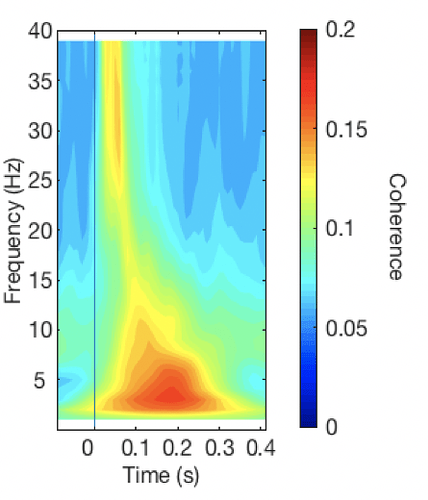Hi Francois,
thank you very much for your reply.
Please find below an example of a coherency (averaged across all electrodes) time by frequency representation I was hoping to produce something similar to in Brainstorm.
In regards to code, with dataSPfreq_coh being my preprocessed data for a single subject:
% interpolating NaN values due to removal of TMS pulse
cfg = [];
cfg.prewindow = 0.995;
cfg.postwindow = 0.990;
cfg.method = 'linear';
dataSPfreq_coh = ft_interpolatenan(cfg, dataSPfreq_coh);
% freq_coherency analysis
cfg = [];
cfg.output = 'powandcsd';
cfg.method = 'mtmconvol';
cfg.foi = 2:1:40;
cfg.t_ftimwin = 2 ./ cfg.foi; %length of the sliding time window in seconds
cfg.tapsmofrq = 0.4 *cfg.foi; % smoothing increases with increase in freq_coh
cfg.toi = -1:0.01:1;
dataSPfreq_coh = ft_freqanalysis(cfg, dataSPfreq_coh)
% Imaginary coherency analysis
cfg = [] ;
cfg.method = 'coh';
cfg.complex = 'absimag';
mycoh = ft_connectivityanalysis(cfg, dataSPfreq_coh);
Then with the output structure, I just averaged across the channel domain (something like 1770 pairs) to create a matrix of coherency values by time by frequency, which is what the plot is above.
Best,
Paul
